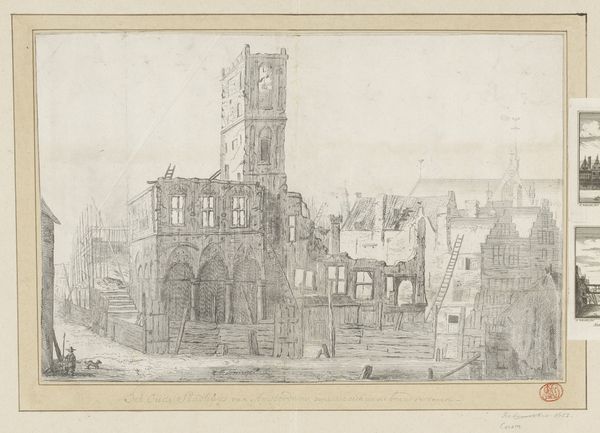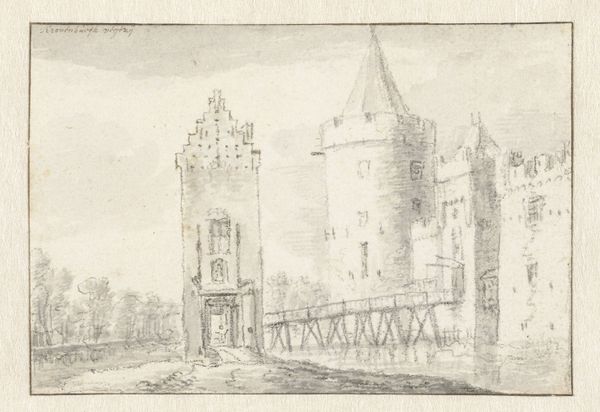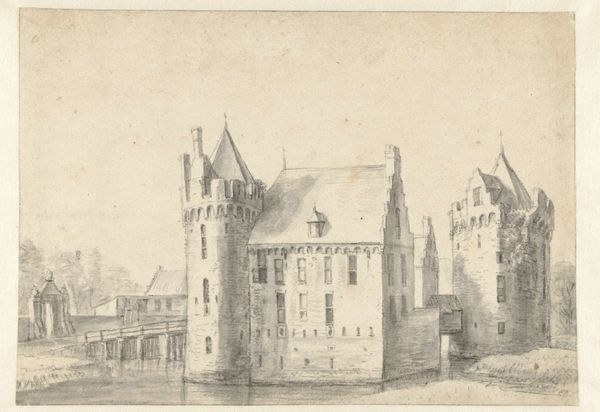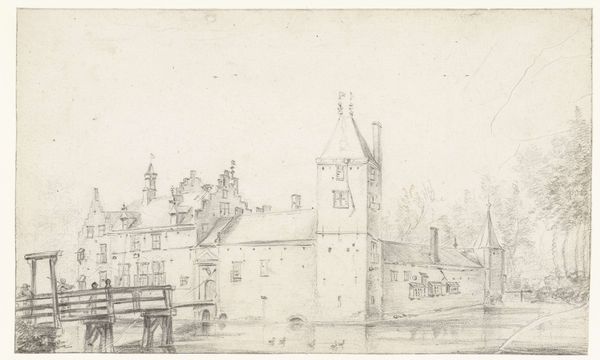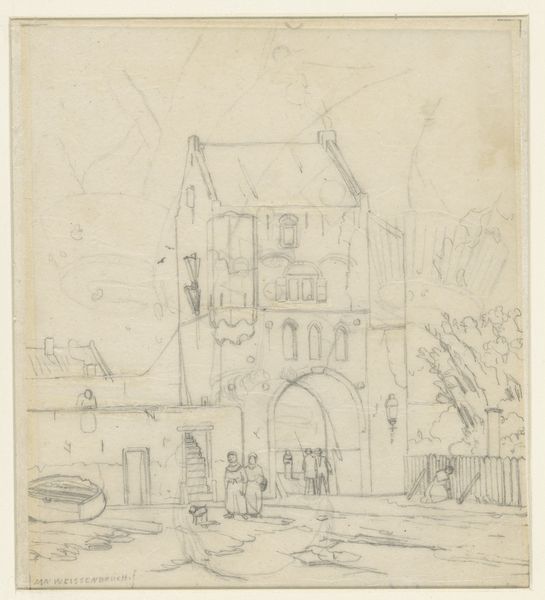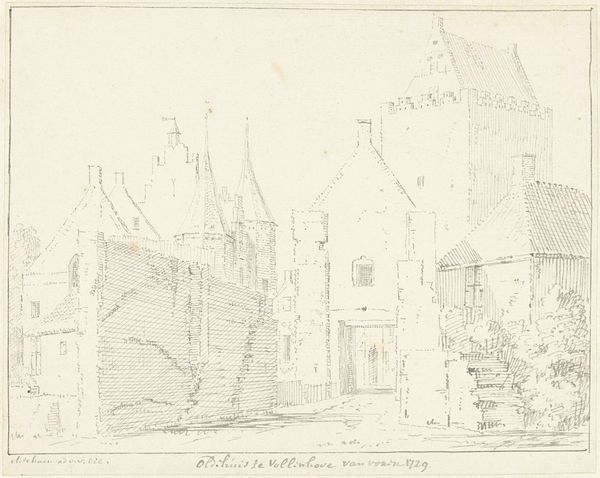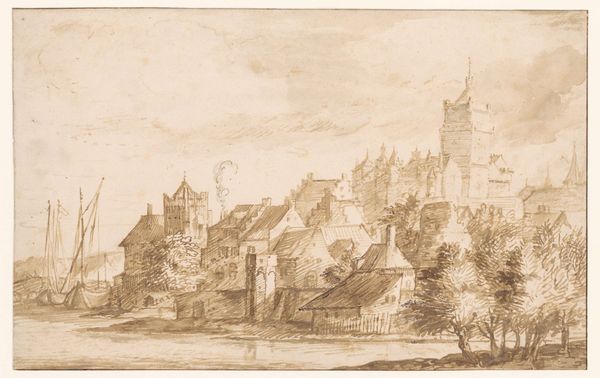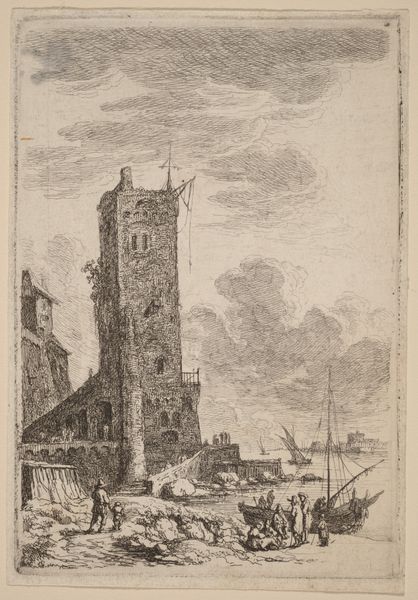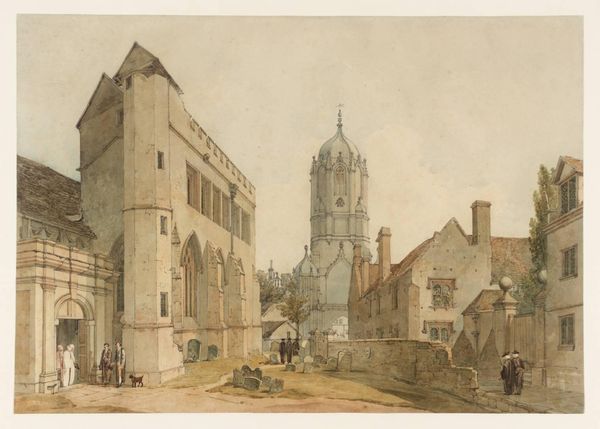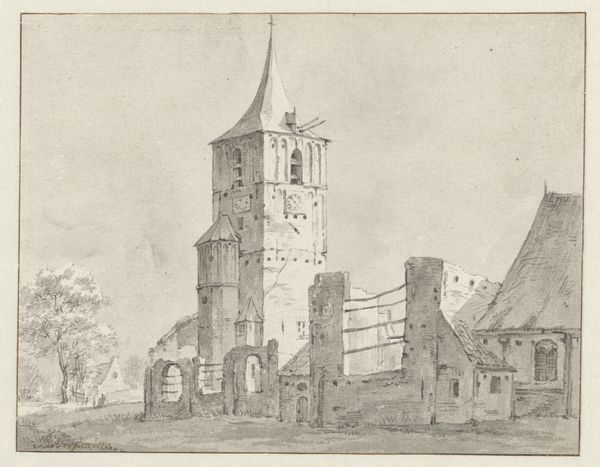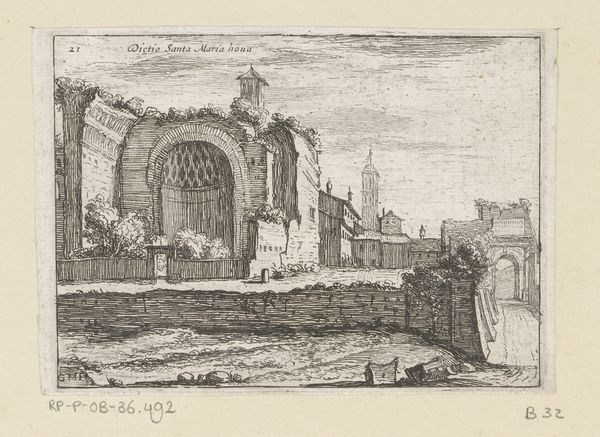
drawing, ink
#
drawing
#
dutch-golden-age
#
landscape
#
etching
#
ink
#
cityscape
#
realism
Dimensions: height 357 mm, width 354 mm
Copyright: Rijks Museum: Open Domain
Curator: This etching in ink is by Roelant Roghman, titled "Ruins of the Old Town Hall, Amsterdam, after the Fire of 1652." The Rijksmuseum houses it. Editor: Oh, that's hauntingly beautiful! It’s got this wispy, almost ghost-like quality. All the grays, very melancholic. Curator: It's interesting to consider this work in the context of Dutch Golden Age landscape art. Roghman wasn't just depicting a scene, he was documenting a traumatic event for Amsterdam. Editor: Trauma captured perfectly. You can almost smell the smoke, you know? I imagine the scene: charred timbers, sooty air… and then an artist stands there amidst all that mess and decides, yeah, this devastation deserves to be remembered. Dark. Curator: The fire had a profound impact, particularly on ideas around governance. Considering Roghman was born into a family of artists, intellectuals and collectors, the Town Hall would be intrinsically linked to the fabric of Amsterdam's elite. He witnessed a literal destruction of power. Editor: And what's left is just the bare bones of architecture. I mean, look at that skeletal tower; it almost reaches into the sky. There’s this incredible fragility on display that’s deeply personal. Do you think this speaks to wider events happening around Europe at the time? Curator: Absolutely. 1652 was within the Eighty Years' War. This was a time of huge sociopolitical changes; an event like this carries much more than face value, it reveals the volatility of systems and a need for rebuilding and reform. The buildings in the drawing were significant for merchants and administration, and its destruction caused more than mere economical damage. Editor: Incredibly profound, it's like he’s inviting us to contemplate resilience amidst loss. I keep wanting to paint this image with a pop of yellow... a flickering candle perhaps. I have this bizarre desire to resurrect hope amidst the despair. Curator: An interesting interpretation. It feels as though Roghman was more interested in depicting this tragedy as a crucial marker of the passage of time. It serves as a sober, honest account. Editor: I'd say the opposite! It doesn't matter the historical relevance or accuracy, to me, this resonates deeply, like something ripped from a dream. I like how something created out of disaster, becomes so beautiful and precious centuries later.
Comments
No comments
Be the first to comment and join the conversation on the ultimate creative platform.
